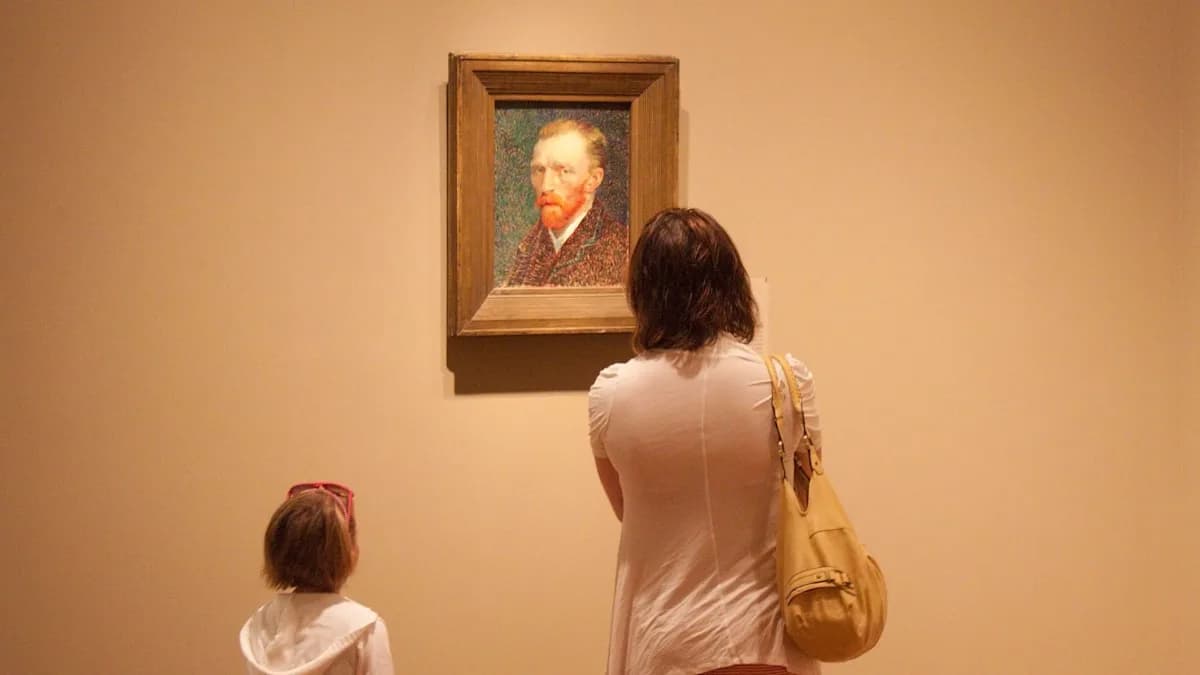We're loading the full news article for you. This includes the article content, images, author information, and related articles.
New research shows visiting galleries significantly reduces stress hormones and inflammation, offering a potential low-cost wellness strategy as Kenya battles a rising tide of non-communicable diseases.

LONDON, UNITED KINGDOM – Visiting an art gallery is not merely a leisure activity but a potent, evidence-backed intervention for improving physical and mental health, a landmark study from King's College London revealed on Tuesday, 28 October 2025, EAT. The first-of-its-kind research provides compelling physiological data showing that viewing original works of art can significantly lower stress, reduce biological markers of inflammation, and positively engage the body's immune, hormone, and nervous systems simultaneously.
The findings carry significant weight for Kenya, where the Ministry of Health has reported a sharp increase in the burden of non-communicable diseases (NCDs) such as cardiovascular conditions, diabetes, and mental health disorders. These diseases now account for over half of all hospital admissions and deaths in the country, creating a major public health and economic challenge.
The UK-based study, conducted at the Courtauld Gallery in London, involved 50 participants aged between 18 and 40. Researchers divided the group in two: half viewed original masterpieces by artists like Van Gogh and Manet, while the control group observed high-quality reproductions in a standard, non-gallery setting. Using wearable sensors and saliva samples, the scientific team measured heart rates, skin temperature, and key biomarkers before and after the 20-minute viewing sessions.
The results were striking. Participants inside the gallery who viewed original art saw their levels of cortisol—the body's primary stress hormone—fall by an average of 22%. In contrast, those looking at reproductions experienced only an 8% decrease. Furthermore, the gallery group showed a significant reduction in two key pro-inflammatory proteins, or cytokines, which are linked to chronic diseases. Interleukin-6 (IL-6) levels dropped by 30%, and Tumor Necrosis Factor-alpha (TNF-alpha) fell by 28%, with no such changes observed in the control group. Dr. Tony Woods, a researcher at King's College London, stated that these markers are associated with a wide range of health problems, from heart disease and diabetes to anxiety and depression, suggesting cultural experiences can play a tangible role in protecting the body and mind.
These findings arrive at a critical time for Kenya's health sector. The World Health Organization (WHO) has increasingly advocated for the integration of arts into health and wellness frameworks, highlighting their potential as cost-effective, low-risk interventions. A 2019 WHO report, which synthesized over 3,000 studies, concluded that arts engagement can help tackle complex health challenges, including NCDs and mental illness.
The concept, known as "social prescribing," involves healthcare providers referring patients to non-clinical, community-based services, including arts and cultural activities. The UK has been a leader in this field, with programs showing that arts-on-prescription can lead to a 37% drop in doctor visits and a 27% reduction in hospital admissions. For Kenya, adopting such models could offer a complementary pathway to conventional medical treatments, easing the strain on an already burdened healthcare system.
With a burgeoning art scene in Nairobi and other urban centres, Kenya is well-positioned to explore these benefits. Institutions such as the Nairobi National Museum, Circle Art Gallery, and Paa ya Paa Arts Centre could serve as vital partners in public wellness initiatives. Such programs could provide accessible and culturally relevant avenues for stress reduction and mental health support, aligning with the Ministry of Health's strategic goal of promoting preventative healthcare.
The study also underscores the unique power of experiencing original art. The superior physiological benefits observed in the gallery group compared to those viewing reproductions suggest that the environment and the authenticity of the artwork are crucial. This aligns with other neurological research indicating that the brain's response to a genuine artwork is significantly stronger—in some cases, up to ten times more intense—than its reaction to a copy or poster. The experience of being present in a dedicated cultural space appears to amplify the therapeutic effects.
As Kenya continues to urbanize and face the associated lifestyle shifts that fuel NCDs, innovative and holistic approaches to public health are essential. This study provides a robust scientific foundation for policymakers, healthcare providers, and cultural institutions to collaborate on harnessing the healing power of the arts. By integrating cultural visits into the national wellness toolkit, Kenya can develop a preventative health strategy that is not only effective but also enriches the lives of its citizens.
Keep the conversation in one place—threads here stay linked to the story and in the forums.
Other hot threads
E-sports and Gaming Community in Kenya
Active 6 months ago
Popular Recreational Activities Across Counties
Active 6 months ago
The Role of Technology in Modern Agriculture (AgriTech)
Active 6 months ago
Investing in Youth Sports Development Programs
Active 6 months ago